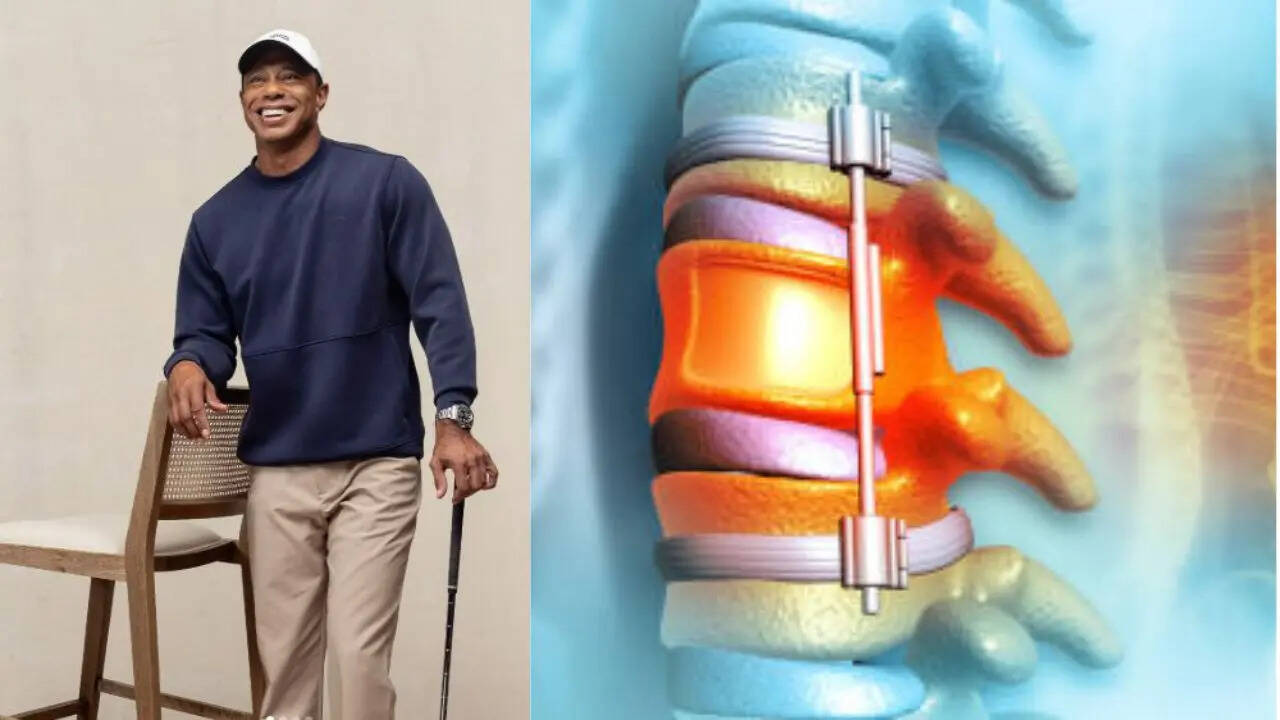
Tiger Woods Undergoes 7th Back Surgery After Collapsed Disc (Pics credit: Instagram/iStock)

Tiger Woods recently underwent back surgery – the seventh procedure he needed to address issues with his lower spine. The 49-year-old golf pro shared the news with a statement on X, saying, “After experiencing pain and lack of mobility in my back, I consulted with doctors and surgeons to have tests taken,” he wrote. “The scans determined that I had a collapsed disc in L4/5, disc fragments, and a compromised spinal canal.”
“I opted to have my disc replaced yesterday, and I already know I made a good decision for my health and my back,” he added.
Even though the 15-time major champion did not mention how long the surgery would keep him off the golf course, Woods has not played since his loss in the PNC Championship last year. It is also the second time Woods has undergone back surgery in just over a year, with the first one on his lumbar spine in September last year to relieve a nerve impingement of his lower back.
What is collapsed disc spine surgery?
A collapsed disc spine surgery, also known as a diskectomy, is a procedure done to remove a damaged disc to relieve pressure on nerves. Doctors say the surgery may be necessary if non-surgical treatments fail, and symptoms like severe pain, numbness, weakness, or trouble walking are present.
The procedure can either be open, which uses a larger incision, or minimally invasive, which means using a small incision with a camera.
Open spine surgery is the traditional procedure performed for a collapsed disc condition, which involves an incision of about six to eight inches to reach the infected area of the spinal column. Doctors use procedures like laminectomy, spinal fusion, and open discectomy to remove damaged disc tissue. The recovery process in an open disc procedure takes several months.
In minimally invasive spine surgery, through a small incision in the neck or back, doctors insert multiple tubes to protect the muscles and tissues surrounding the spine. A camera is inserted through the tubes, and the collapsed disc is removed partially to remove pressure from the compressed nerve, all the while maintaining the structure and stability of the spine.
What causes a collapsed disc?
Doctors say there are many reasons and causes that contribute to the development of a collapsed disc condition, a few of which include:
Ageing
Like any other degenerative spine condition, ageing is among the most common causes for the development of a collapsed disc. Over time, the discs lose water content, which makes them brittle and less flexible. According to experts, they absorb the shock and act like cushions for the spine, but tend to lose their elasticity over time, which increases their overall vulnerability.
Weight
Another cause of a collapsed disc condition is being overweight or obese. The spine is responsible for the support of our upper body weight, and the heavier you are, the greater the axial load on the spine. As they are already more susceptible to damage with time, being overweight increases the likelihood of the disc collapsing or flattening out.
High-intensity sports or exercise Those involved in high-intensity workouts and sports are prone to collapsed disc conditions, as forceful blows potentially lead to a collapsed disc condition. Certain sports also increase the axial load placed on the spine, such as the impact of high-impact sports or repetitive motions, such as twisting and swinging.






